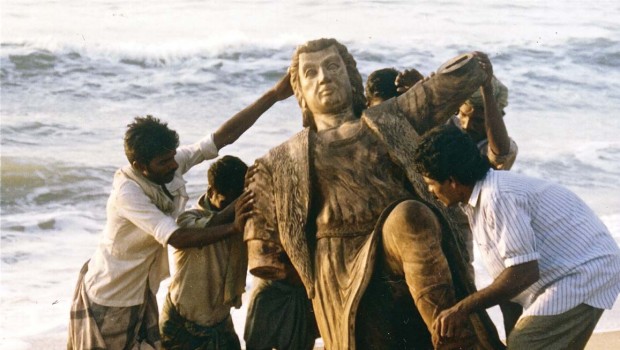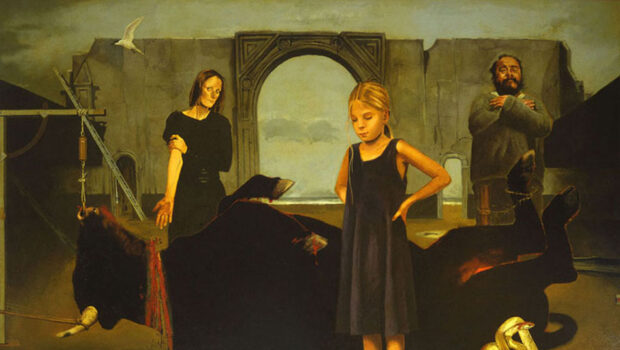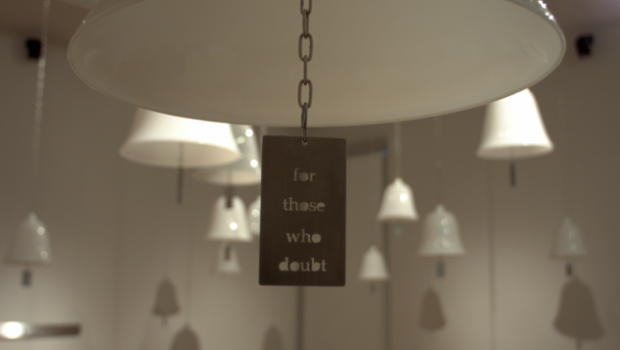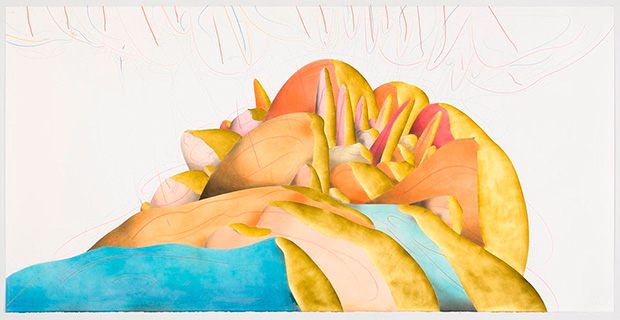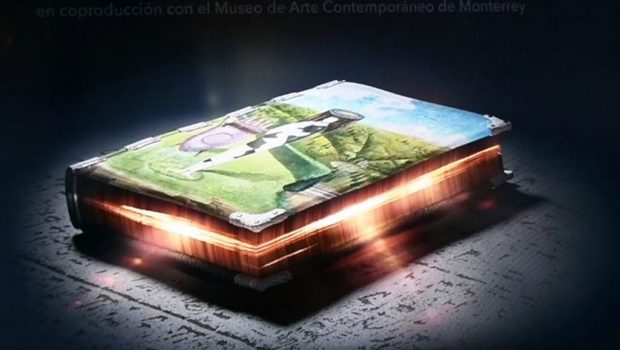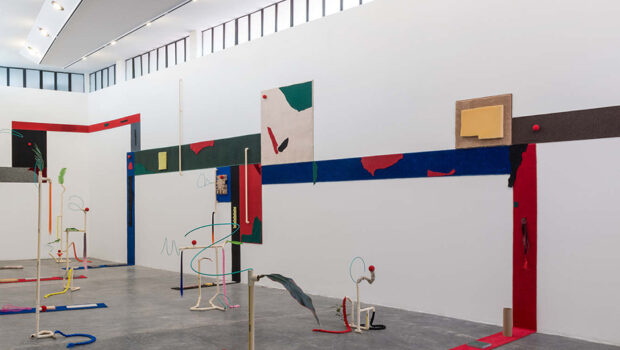Time 2 Play: Juan Jose Diaz Infante
Fernando Castro R.
Download Complete PDF / Descargar
Juan José Díaz Infante has published twentyfive books, has produced and directed nine experimental videos, and has worked as curator and artist in many national and international exhibitions. Currently, he is the director of an annual event called PLAY and of the Encuentro de Ciencia y Arte, México. Yet, when you hear Díaz Infante tell about the incredible projects he has done, you think he is making stuff up just for a good laugh. For example, he may tell you about a work he did in 1992 when the Old and New World were commemorating the 500th anniversary of Cristoforo Colombo’s arrival in America. Of course, Colombo did not intend to come here, but to Asia. In fact, for years he really thought he had arrived in Asia. Hence he authored one of the biggest historical misnomers still in use when he called us “Indians.” Díaz Infante imagined counterfactually that Colombo had indeed made it to Asia and had disembarked in Mahabalipuram, on the eastern coast of India. He tore a drawing of Colombo from a school textbook and sent it as a model to India to have a wooden sculpture of it carved there. He then had the wooden Colombo installed in a village with a long tradition of sculptors, so that the image would spark a local practice of making such Colomboses–as if in memory of the arrival of the Genovese seeker of spices and gold.
Two years later Díaz Infante did Valet Parking at the Casa Lam in Mexico City. He invited an assortment of important collectors, artists, musicians, and business honchos to witness the debut of a new work. The guests were welcomed by tutu wearing ballerinas who proceeded to park their cars. As the guests imbibed and relished tasty hors d’oeuvres in the spacious lobby of Casa Lam, they began to restlessly wonder when they would be regaled by the promised performance, only to find out that it had already taken place in the parking lot.
By 1995 Díaz Infante’s reputation had built enough gravitas so that he began to get invitations to important art events. On account of an Internet collaborative work he had mediated called Open Bridge he was invited to participate at the European Cultural Month in Cyprus–the invitation was extended to his own personal work. The event’s theme was “a message in a bottle” and the exhibition space was an ancient Greek catacomb inside Nicosia’s Turkish territory. Díaz Infante’s wife Jennifer, was very excited for him and hoped he would deliver an important project. But as months went by and with the deadline looming, Díaz Infante had done little or nothing of the project. Two days before the deadline and with much nagging from his wife to take his own work seriously, Díaz Infante opened a drawer in his bedroom, pulled out a couple of woolen socks, placed them inside a Federal Express envelope, and sent it off to Cyprus with a note that read “It must be cold there.”
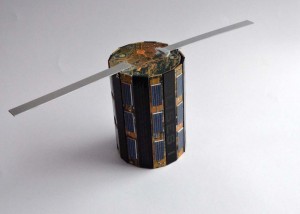 In the year 2000 Díaz Infante, together with 38 other artists and musicians from all over the world met at the Festival of Contemporary Music “The Roaring Hooves” in the Gobi Desert, Mongolia. With the background music of a German trombonist and the performance of a Swiss dancer, Díaz Infante recited a poem called Shbop to an audience that included astonished Mongolian nomads on horseback. A major influence in Díaz Infante’s early adventures in artistic endeavors was the Spanish poet/musician/art-instigator Angel Cosmos (1949-1993). Perhaps it is to Cosmos that Díaz Infante owes the idea of the practice of art as “an attempt to make poetry”–not just write poetry, nor take photographs, nor play music–but actually make the poetic entity. In 1984 Cosmos, Díaz Infante (then a 23 year-old photographer), and Arturo Márquez (composer), formed the group Música de Cámara (chamber music). Together they gathered an “orchestra” of then-young, now-renowned photographers (Lourdes Almeida, Alejandro Castellanos, Gilberto Chen, Miguel Femat, Gabriel Figueroa, Graciela Kartofel, Salvador Luteroth, Jesús Sánchez Uribe, et al) to perform the piece “Concert For Photographers” at the VII Foro Internacional de Música Nueva. When the “musicians” appeared on stage holding their instruments (photographic cameras, motordrives, electronic flashes and chargers) and the performance began–amidst the sounds of shutters, the turning of motor drives, the recharging of electronic fl ashes and the roaring of the synthesizer–the audience may or may not have detected the real noise of photography–not the one that “captures” reality, but the one that disturbs it.
In the year 2000 Díaz Infante, together with 38 other artists and musicians from all over the world met at the Festival of Contemporary Music “The Roaring Hooves” in the Gobi Desert, Mongolia. With the background music of a German trombonist and the performance of a Swiss dancer, Díaz Infante recited a poem called Shbop to an audience that included astonished Mongolian nomads on horseback. A major influence in Díaz Infante’s early adventures in artistic endeavors was the Spanish poet/musician/art-instigator Angel Cosmos (1949-1993). Perhaps it is to Cosmos that Díaz Infante owes the idea of the practice of art as “an attempt to make poetry”–not just write poetry, nor take photographs, nor play music–but actually make the poetic entity. In 1984 Cosmos, Díaz Infante (then a 23 year-old photographer), and Arturo Márquez (composer), formed the group Música de Cámara (chamber music). Together they gathered an “orchestra” of then-young, now-renowned photographers (Lourdes Almeida, Alejandro Castellanos, Gilberto Chen, Miguel Femat, Gabriel Figueroa, Graciela Kartofel, Salvador Luteroth, Jesús Sánchez Uribe, et al) to perform the piece “Concert For Photographers” at the VII Foro Internacional de Música Nueva. When the “musicians” appeared on stage holding their instruments (photographic cameras, motordrives, electronic flashes and chargers) and the performance began–amidst the sounds of shutters, the turning of motor drives, the recharging of electronic fl ashes and the roaring of the synthesizer–the audience may or may not have detected the real noise of photography–not the one that “captures” reality, but the one that disturbs it.
In 2007, Díaz Infante did a work titled Letters to Vicente Fax from José Luis Borgues (sic). The title alluded to Mexican president Vicente Fox’s most notable of his frequent snafus. At the Congress of the Spanish Language in Madrid, in front of King Juan Carlos of Spain, he butchered the name of the renowned Argentine writer Jorge Luis Borges. Another part of the work touched upon an infamous incident in which Fox’s administration announced the expropriation of 5,000 hectares of farmland around San Salvador Atenco, twenty miles outside Mexico City, for the construction of a new two-billion dollar airport. Under the government decree 4,375 families would be forced to abandon their land. It is ejido land held communally by indigenous Nahua communities since the Mexican Revolution of 1910. The government naively presumed that their offer to pay the local people 60 cents per square meter of land and the promise of giving them menial jobs at the future airport would be enough for everyone to get on board. In fact, the local peasants launched massive protests and the issue became an international cause célèbre. Even though the protest of the campesinos was met with brutal government repression, they did not yield, and in 2006 the airport project was cancelled. Díaz Infante asked all willing people to come to an art center called “The Epicenter “ to pose with a machete in hand. Over one hundred people volunteered. The final work was edited as a video.
The vehicle of Díaz Infante’s most recent project is Ulises I, a satellite the size and shape of a beer can that is to be launched into orbit in order to broadcast an opera: The Game. It is an opera based on the “game of the century” played between Germany and Italy during the 1970 World Cup. None of these countries won that World Cup but their languages define “opera.” The team “Mexican Space Collective” made up of eleven composers, the same as the number of players in a soccer team, will contribute to the work. Each player will be aiming their “ball” in a different direction but within the same game. In his website altamiracave.com Díaz Infante describes Ulises I thus, “The concept behind this particular art work is replacing the piece of art for its process. It is a multi-level opera with many levels of writing. It takes music to be the art of writing it. The work hinges on the constant relationship between the score and the music. It starts with an idea born in a third world country with a team with no experience whatsoever in launching a satellite trying to do so successfully. That is a story in itself. Ulises I revisits Duchamp’s concept: the object of art is not the object of art, it is the center of discussion.”
In the year 2000, Díaz Infante and yours truly collaborated in the project The Art of Risk / The Risk of Art. It was meant to go against the tendency of art institutions to avoid taking chances by investing only in art that comes with a certain “warranty.” We asked several exhibition spaces whether they were willing to accept showing an exhibit that did not yet exist and that would begin to take shape only two weeks before opening night. To their credit, the directors of the Cineteca de Nuevo León accepted the proposal. By so doing they committed to showing the work whether it turned out to be subversive, sexual, offensive, or whatever other quality that often makes censors prevent or close an exhibit. The artists, on the other hand, took the risk of showing work so fresh they had little time to ponder. They were provided with all the means necessary to produce the works they wished. Díaz Infante invited seven artists to participate: Daniel Rivera, Alfredo De Stéfano, Doris Steinbichler, Santiago Rebolledo, Enrique Cantú, Ryuichi Yahagi, and Fernando Llanos.
Perhaps only one of every five projects an artist embarks on is successful. One could argue that for any artist the probability of success is as low as 20%. The probability of getting heads or tails when you toss a coin is 50%; the probability of getting a 5 with a cubic die is about 16%. The probability of getting an interesting exhibit from the first person you meet when you get off the taxi in downtown Monterrey is close to 0%. According to this reasoning the probability of success of the Risk of Art / The Art of Risk given the group of artists we invited was substantially less than 100% and more than getting 5 in a throw of a die. In other words, we were more likely to fail. How then, did we minimize the risk? We were playing with dice loaded with the seriousness of the artists.
Posted: April 25, 2012 at 9:29 pm


